Plan to Sikkim is a small state located in the Himalayan range, bordering Nepal to the west, China (Tibet) to the north and China (Tibet) and Bhutan to the east Travel agency in India. To the south is the state of West Bengal. This state is predominantly Buddhist (Tibetan), with a few Hindu temples and a few Catholic and Protestant churches. The main language is Nepali.
While visiting East, South, and West Sikkim is quite free, North Sikkim (and East Sikkim) can only be visited with the services of a travel agency. For trekking enthusiasts, a guide is mandatory. In short, the foreigner passing through does not do what he wants for security reasons (Plan Sikkim in a fragile region with regular landslides) and especially because of the government’s desire to create jobs by requiring the services of travel agencies, which are happy to offer you high prices given the local standard of living (do not hesitate to read the article where I give advice).
Compared to Ladakh, Sikkim offers more monuments to visit (mainly Tibetan Buddhist temples) and above all the distances between cities are reduced (less than 400km from the far north to the far south), on the other hand the roads are relatively in poor condition, travel times are therefore long with an average speed of 25 km/h! All local transport is by jeep or car.
The villages are small, there is little to visit on site because everything is spread out in nature. That said, it is very pleasant when there are not too many tourists, to take your time to chat with the locals and enjoy the beautiful nature.
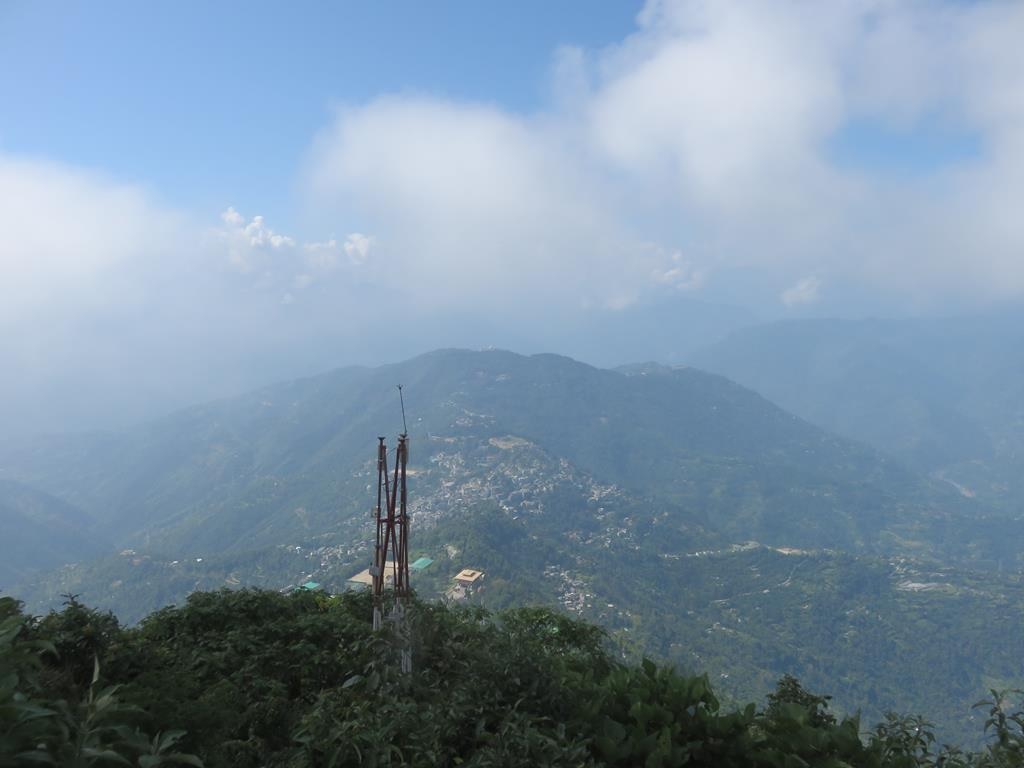
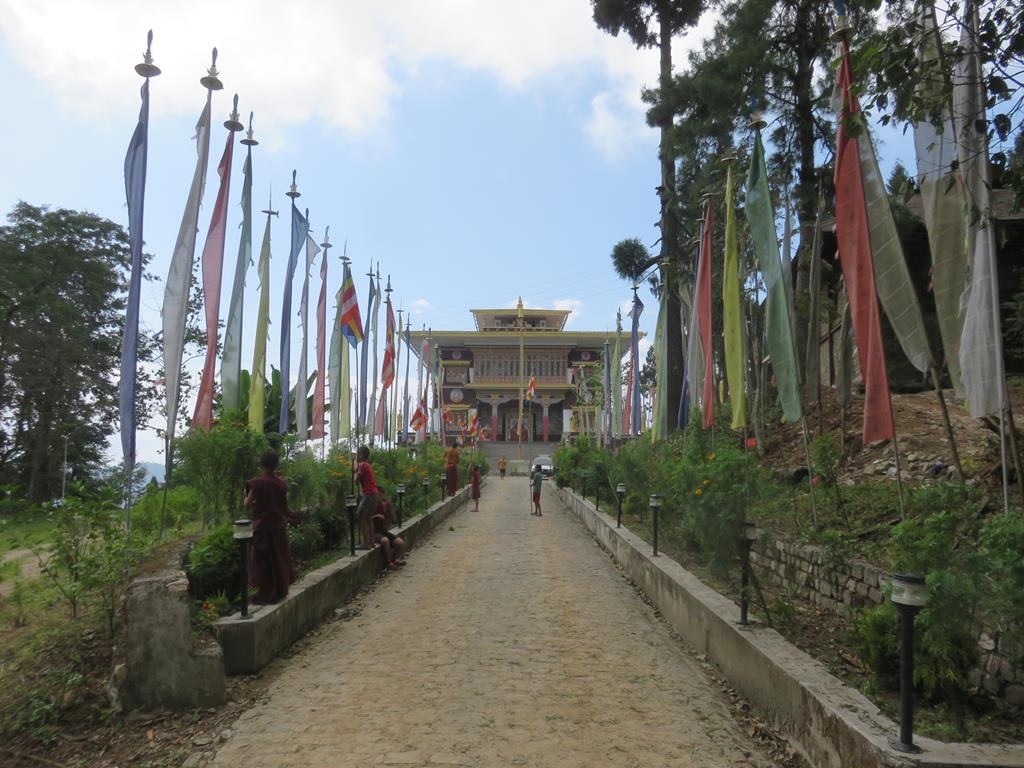
Given the restrictions (permits, travel agency, guide for treks, etc.) and not wanting to spend a fortune on services, or travel miles to visit a Tibetan temple (which all look the same from the inside), I limited myself to visiting the main villages mentioned in the tourist guides of the East, South and West Sikkim regions. Sikkim is like Ladakh: you have to travel a lot to fully enjoy the wealth of this state.
Yes, but spending a lot of money on a service is not part of my travel philosophy; especially when there is a special foreigner price. Well, as far as I am concerned, I give thanks to Providence which arranged things differently by allowing me to Plan Sikkim in a different way.
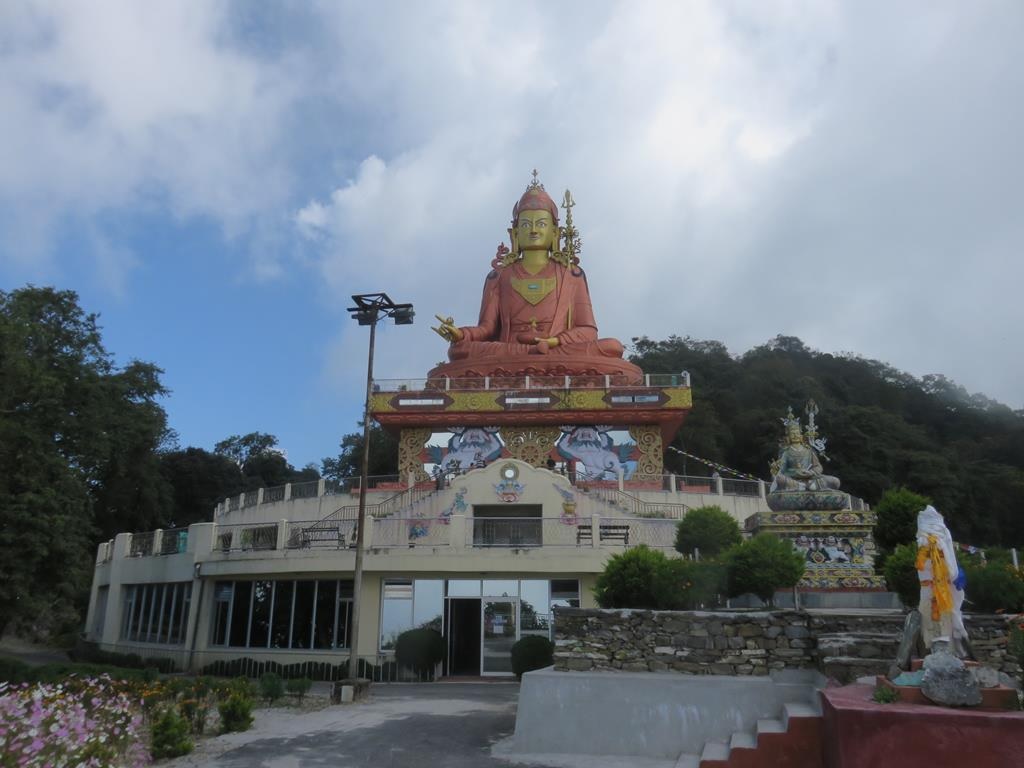

Namchi is the capital of South Sikkim, it is through this village that I wanted to visit Sikkim. The village is of modest size, with a renovated center reserved for pedestrians (Central Park). The village itself has no interest, the 2 things I wanted to visit are in the surroundings on high points.
Samdruptse (2400m): perched on a high point and located 5.5 km from the village, a large statue of a seated Buddha looks at you from afar with a serious look. Who says Buddha status, says temple nearby. But there is no temple here, just an ugly prayer room under Buddha. The entrance is paid, but after explaining to me with the guard (do not pay to visit places of worship), he let me in for free.
I did not find the place extraordinary, especially since the view of the surroundings is very limited (we have a better view further down the road). The gift: Fr Marcel going to visit a village nearby, dropped me off by car very close to Samdruptse, saving me kilometers on the road. I made the return on foot because there was no question of taking a taxi;
Ngadak Monastery (or Nandak Gumpa): pretty little Tibetan monastery north of Namchi, on the road to Ravangla and Samdruptse.
Siddhesvara Dham (1710m): better known as Char Dham, it is a Hindu complex located on a high point opposite Samdruptse, 4.5 km from the village in Solophok. Visiting this complex allows you to discover miniature temples that are replicas of the 4 temples of the most sacred pilgrimage for a Hindu (Badrinath in the north, Puri in the east, Rameswaran in the south and Dwarka in the west).
It reminded me of my visit to these places and especially of discovering the temple of Puri which is forbidden to non-Hindus. To guard this place, a large statue of Shiva stands high up. There too, the entrance is paid, but after explanation, I entered for free. The gift: the wedding reception was 1 km before the complex, so I was dropped off by car at the reception and then I finished the rest of the journey on foot. Here too, I made the return on foot. I highly recommend visiting this place.
The place not visited: Shirdi Sai Mandir 5 km south of Namchi in Assangthang. I discovered this temple by looking at pictures on the window of a travel agency. Seeing the picture, I would have been tempted to go see it, but I had already decided to leave.

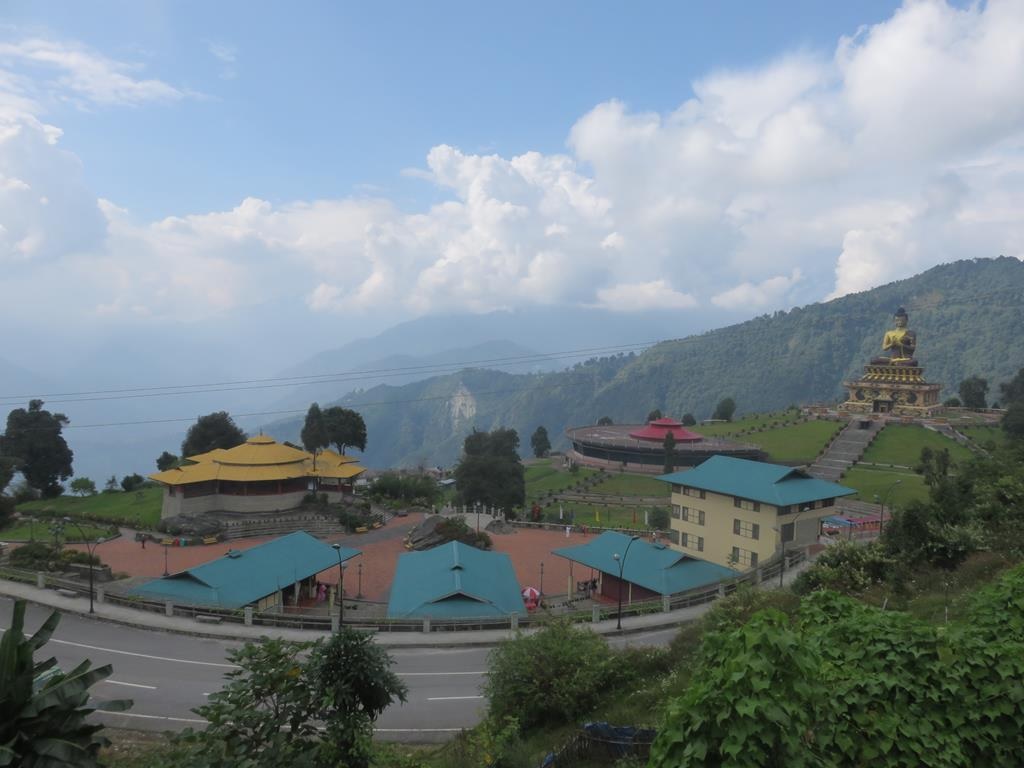
Located 25 km north of Namchi, this village is smaller than Namchi and does not make you want to linger there. And yet, it is there that I had my most beautiful encounter in Sikkim.
Tathagata Tsal: more commonly called Buddha park, it is a garden where a large statue of Buddha stands;
Nyingmapa Monastery: pretty Tibetan temple located on the path before arriving at the park.
Maenam hills (3200m): it is a (free) trek of 9 km one way in a rhododendron forest, which allows you to arrive at the top of a mountain to offer you a magnificent view of the surroundings. Not wanting to do a trek of several days with a guide, I therefore embarked on this mini trek. The problem, once past the entrance you have to find the unmarked path. I followed the only existing path (with a big pipe in the middle) for 20 minutes before meeting someone who told me that I was on the wrong track.
Going back 100 meters, he indicated to me on the right a tiny path covered by vegetation. Once you’ve found the right path, you just have to follow the waste left by your predecessors… I walked for 2 hours and then came back because of the rain, the path becoming too slippery. It’s a popular trek, to be done in spring when the flowers are in bloom. However, the path is not maintained and in some places it’s downright jungle (machete recommended!).
On the way back down, I came across 5 Indians who were just starting the trek and who were planning to sleep the night at the summit (it rained that night). They just left with food, in street clothes (one of them with his beautiful leather shoes) and without protection for the rain!
The place not visited: New Ralong Monastery, a Tibetan monastery located 6 km from the village.

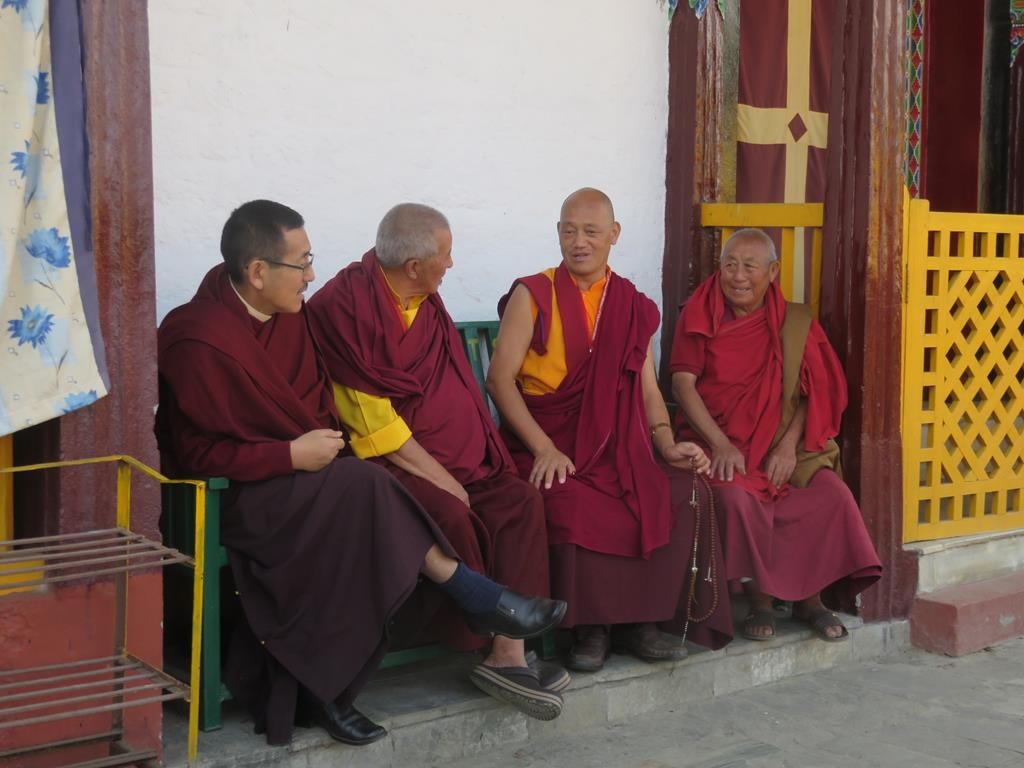
Pelling is located in West Sikkim, 41 km from Ravangla. The particularity of this village is to be divided into 3 parts spread over 1 km: Upper Pelling, Middle Pelling and Lower Pelling. If the village is absolutely uninteresting (only hotels lined up along a road), it nevertheless offers a great view of the surroundings. In fact, we come here to visit the 2 Tibetan monasteries located nearby:
Pemayangtse Monastery: 2 km away, it is the 2nd most important monastery in Sikkim. It happened at that time that the monastery celebrated the 360th anniversary of Gyalwa Lhatsun Chenpo and welcomed the 3rd Lewdun Bumther Monlam Chenmo! Festive atmosphere over several days, which allowed me to participate in a time of prayer with the monks who had to repeat the same thing 100,000 times in Tibetan (I didn’t understand what it was). Another advantage of this festival: the free visit to the temple when normally you have to pay a fee.
Sanga Choling Monastery: 4 km to the west perched on a high point, it is the best viewpoint I had during my visit to Sikkim with a bird’s eye view of the surroundings, if the sky is clear.
Places not visited in the surroundings
Sangay Falls: 10 km away, a waterfall
Singshore Bridge: 21 km away, it is a large suspended metal bridge;
Yuksom: 32 km away, it is the starting point for treks with a mandatory guide except for visiting Khecheopalri Lake and Kanchenjunga Falls (one-day trek there and back).
Tashiding: 40 km away, a Tibetan monastery.

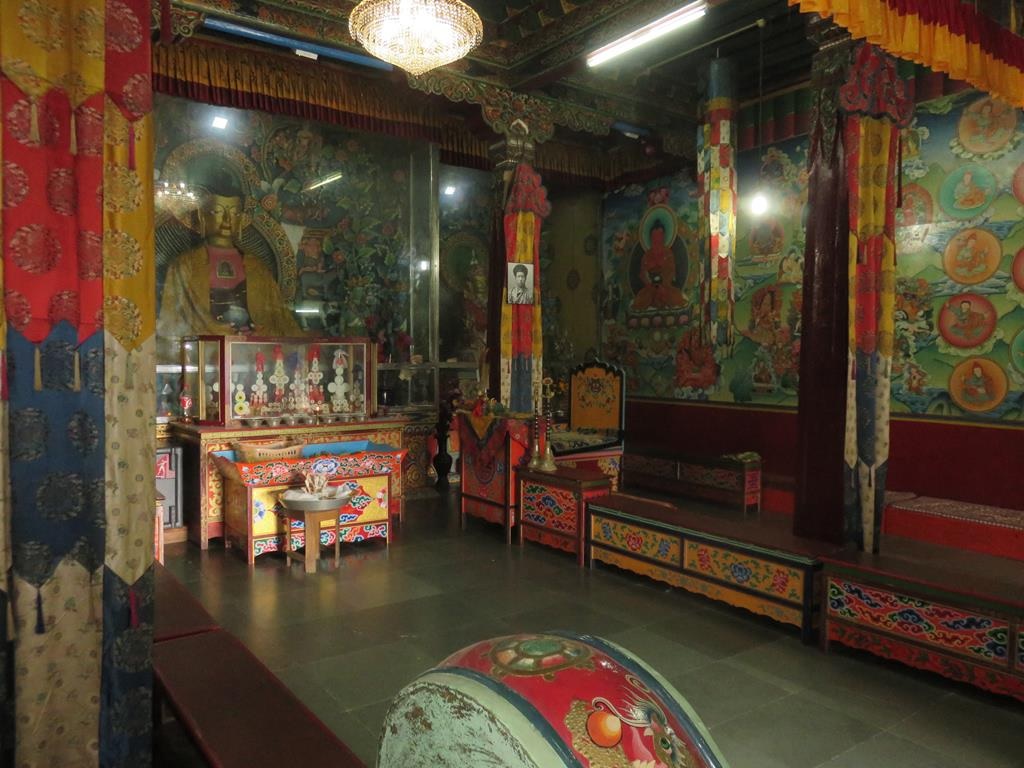
Located between Pelling and Ravangla, this small village at the bottom of a valley is above all an important road junction since it is located at the crossroads between Tashiding-Yuksom, Ravangla, Jorethang and Geyzing-Pelling. Looking down on the village, I saw a temple on the banks of a river. So I went to see this temple while waiting for my connection.
Access to the Kirateshwar Mahadev Temple is via a footbridge that spans the turquoise-blue river in the valley. You then arrive in a magnificent garden to arrive at a small yellow temple. The temple itself is not very pretty and the interior is rather ugly. On the other hand, I met a very nice young Hindu priest with whom I spoke about religion; which is rather rare. This is how I learned where the word “christianity” came from: it comes from “Krishna ity”, the name of a Hindu god!


Located in Sikkim and 66 km from Ravangla, Gangtok is the capital of Sikkim. The city is not very wide but rather long on several “levels”. Along the main road is the M.G. Marg Rd, the semi-pedestrian street where all the shops are concentrated, including the boutiques of major international brands. Sikkim is also the place where you can eat momos, rolls and the cheapest chowmeins in India: from 20 to 60 rupees per dish. On the other hand, the price of accommodation is rather high because of the start of the high season.
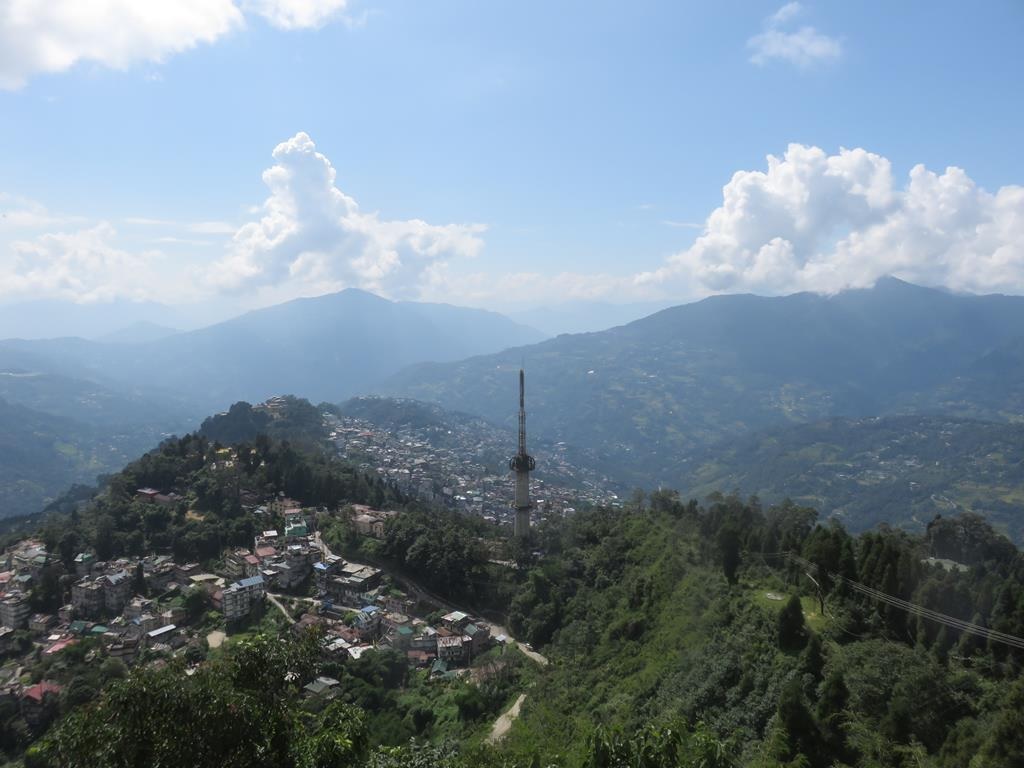
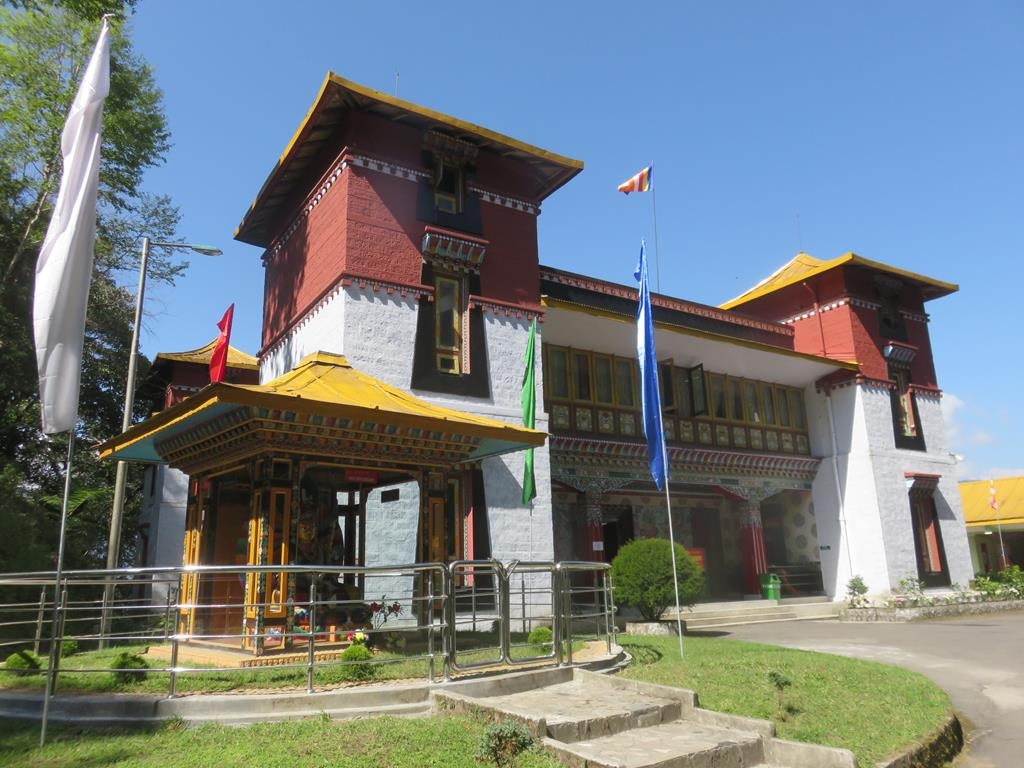
Mangan is the capital of North Sikkim, 65 km from Gangtok, which can be visited freely except that there is nothing to visit. To go further north, you must go through a travel agency. Many tourists go to the Yumthang Valley and the Chopta Valley, for 3 days and pay several thousand rupees just to stay a few hours there.
When I asked a Frenchman for advice, he was not very enthusiastic; and when I asked the priests of the church for advice, they told me that it was not the best time (in April when there is still snow and the flowers are in bloom). In short, I prefer to keep my money for something else.
In this blog we provibe brief information about Travel Plan to Sikkim (India) by Delighted Journey
Plan to Sikkim is a small state located in the Himalayan range, bordering Nepal to the west, China (Tibet) to the north and China (Tibet) and Bhutan to the east Travel agency in India. To the south is the state of West Bengal. This state is predominantly Buddhist (Tibetan), with a few Hindu temples and a few Catholic and Protestant churches. The main language is Nepali.
While visiting East, South, and West Sikkim is quite free, North Sikkim (and East Sikkim) can only be visited with the services of a travel agency. For trekking enthusiasts, a guide is mandatory. In short, the foreigner passing through does not do what he wants for security reasons (Plan Sikkim in a fragile region with regular landslides) and especially because of the government’s desire to create jobs by requiring the services of travel agencies, which are happy to offer you high prices given the local standard of living (do not hesitate to read the article where I give advice).
Compared to Ladakh, Sikkim offers more monuments to visit (mainly Tibetan Buddhist temples) and above all the distances between cities are reduced (less than 400km from the far north to the far south), on the other hand the roads are relatively in poor condition, travel times are therefore long with an average speed of 25 km/h! All local transport is by jeep or car.
The villages are small, there is little to visit on site because everything is spread out in nature. That said, it is very pleasant when there are not too many tourists, to take your time to chat with the locals and enjoy the beautiful nature.


Given the restrictions (permits, travel agency, guide for treks, etc.) and not wanting to spend a fortune on services, or travel miles to visit a Tibetan temple (which all look the same from the inside), I limited myself to visiting the main villages mentioned in the tourist guides of the East, South and West Sikkim regions. Sikkim is like Ladakh: you have to travel a lot to fully enjoy the wealth of this state.
Yes, but spending a lot of money on a service is not part of my travel philosophy; especially when there is a special foreigner price. Well, as far as I am concerned, I give thanks to Providence which arranged things differently by allowing me to Plan Sikkim in a different way.


Namchi is the capital of South Sikkim, it is through this village that I wanted to visit Sikkim. The village is of modest size, with a renovated center reserved for pedestrians (Central Park). The village itself has no interest, the 2 things I wanted to visit are in the surroundings on high points.
Samdruptse (2400m): perched on a high point and located 5.5 km from the village, a large statue of a seated Buddha looks at you from afar with a serious look. Who says Buddha status, says temple nearby. But there is no temple here, just an ugly prayer room under Buddha. The entrance is paid, but after explaining to me with the guard (do not pay to visit places of worship), he let me in for free.
I did not find the place extraordinary, especially since the view of the surroundings is very limited (we have a better view further down the road). The gift: Fr Marcel going to visit a village nearby, dropped me off by car very close to Samdruptse, saving me kilometers on the road. I made the return on foot because there was no question of taking a taxi;
Ngadak Monastery (or Nandak Gumpa): pretty little Tibetan monastery north of Namchi, on the road to Ravangla and Samdruptse.
Siddhesvara Dham (1710m): better known as Char Dham, it is a Hindu complex located on a high point opposite Samdruptse, 4.5 km from the village in Solophok. Visiting this complex allows you to discover miniature temples that are replicas of the 4 temples of the most sacred pilgrimage for a Hindu (Badrinath in the north, Puri in the east, Rameswaran in the south and Dwarka in the west).
It reminded me of my visit to these places and especially of discovering the temple of Puri which is forbidden to non-Hindus. To guard this place, a large statue of Shiva stands high up. There too, the entrance is paid, but after explanation, I entered for free. The gift: the wedding reception was 1 km before the complex, so I was dropped off by car at the reception and then I finished the rest of the journey on foot. Here too, I made the return on foot. I highly recommend visiting this place.
The place not visited: Shirdi Sai Mandir 5 km south of Namchi in Assangthang. I discovered this temple by looking at pictures on the window of a travel agency. Seeing the picture, I would have been tempted to go see it, but I had already decided to leave.


Located 25 km north of Namchi, this village is smaller than Namchi and does not make you want to linger there. And yet, it is there that I had my most beautiful encounter in Sikkim.
Tathagata Tsal: more commonly called Buddha park, it is a garden where a large statue of Buddha stands;
Nyingmapa Monastery: pretty Tibetan temple located on the path before arriving at the park.
Maenam hills (3200m): it is a (free) trek of 9 km one way in a rhododendron forest, which allows you to arrive at the top of a mountain to offer you a magnificent view of the surroundings. Not wanting to do a trek of several days with a guide, I therefore embarked on this mini trek. The problem, once past the entrance you have to find the unmarked path. I followed the only existing path (with a big pipe in the middle) for 20 minutes before meeting someone who told me that I was on the wrong track.
Going back 100 meters, he indicated to me on the right a tiny path covered by vegetation. Once you’ve found the right path, you just have to follow the waste left by your predecessors… I walked for 2 hours and then came back because of the rain, the path becoming too slippery. It’s a popular trek, to be done in spring when the flowers are in bloom. However, the path is not maintained and in some places it’s downright jungle (machete recommended!).
On the way back down, I came across 5 Indians who were just starting the trek and who were planning to sleep the night at the summit (it rained that night). They just left with food, in street clothes (one of them with his beautiful leather shoes) and without protection for the rain!
The place not visited: New Ralong Monastery, a Tibetan monastery located 6 km from the village.


Pelling is located in West Sikkim, 41 km from Ravangla. The particularity of this village is to be divided into 3 parts spread over 1 km: Upper Pelling, Middle Pelling and Lower Pelling. If the village is absolutely uninteresting (only hotels lined up along a road), it nevertheless offers a great view of the surroundings. In fact, we come here to visit the 2 Tibetan monasteries located nearby:
Pemayangtse Monastery: 2 km away, it is the 2nd most important monastery in Sikkim. It happened at that time that the monastery celebrated the 360th anniversary of Gyalwa Lhatsun Chenpo and welcomed the 3rd Lewdun Bumther Monlam Chenmo! Festive atmosphere over several days, which allowed me to participate in a time of prayer with the monks who had to repeat the same thing 100,000 times in Tibetan (I didn’t understand what it was). Another advantage of this festival: the free visit to the temple when normally you have to pay a fee.
Sanga Choling Monastery: 4 km to the west perched on a high point, it is the best viewpoint I had during my visit to Sikkim with a bird’s eye view of the surroundings, if the sky is clear.
Places not visited in the surroundings
Sangay Falls: 10 km away, a waterfall
Singshore Bridge: 21 km away, it is a large suspended metal bridge;
Yuksom: 32 km away, it is the starting point for treks with a mandatory guide except for visiting Khecheopalri Lake and Kanchenjunga Falls (one-day trek there and back).
Tashiding: 40 km away, a Tibetan monastery.


Located between Pelling and Ravangla, this small village at the bottom of a valley is above all an important road junction since it is located at the crossroads between Tashiding-Yuksom, Ravangla, Jorethang and Geyzing-Pelling. Looking down on the village, I saw a temple on the banks of a river. So I went to see this temple while waiting for my connection.
Access to the Kirateshwar Mahadev Temple is via a footbridge that spans the turquoise-blue river in the valley. You then arrive in a magnificent garden to arrive at a small yellow temple. The temple itself is not very pretty and the interior is rather ugly. On the other hand, I met a very nice young Hindu priest with whom I spoke about religion; which is rather rare. This is how I learned where the word “christianity” came from: it comes from “Krishna ity”, the name of a Hindu god!


Located in Sikkim and 66 km from Ravangla, Gangtok is the capital of Sikkim. The city is not very wide but rather long on several “levels”. Along the main road is the M.G. Marg Rd, the semi-pedestrian street where all the shops are concentrated, including the boutiques of major international brands. Sikkim is also the place where you can eat momos, rolls and the cheapest chowmeins in India: from 20 to 60 rupees per dish. On the other hand, the price of accommodation is rather high because of the start of the high season.


Mangan is the capital of North Sikkim, 65 km from Gangtok, which can be visited freely except that there is nothing to visit. To go further north, you must go through a travel agency. Many tourists go to the Yumthang Valley and the Chopta Valley, for 3 days and pay several thousand rupees just to stay a few hours there.
When I asked a Frenchman for advice, he was not very enthusiastic; and when I asked the priests of the church for advice, they told me that it was not the best time (in April when there is still snow and the flowers are in bloom). In short, I prefer to keep my money for something else.
In this blog we provibe brief information about Travel Plan to Sikkim (India) by Delighted Journey
Copyright © 2025 Delighted Journey | All Rights Reserved.